Abstract
The influence of the size and location of communities in relation to the different types of watercourse, the availability of a protected water supply, types of housing and the presence of other sanitary facilities on the prevalence of bilharziasis in the Egypt-49 project area has been studied. There is no direct relationship between the size of village and the prevalence of bilharziasis. Main drains and distributaries are potent sources of infection and, in terms of the total population exposed, distributaries play the most significant role in the transmission of infection. Of the other factors, the availability of a protected water supply seems to have the greatest effect on the prevalence. Although the presence of a latrine in the dwelling does not of itself influence the extent of schistosome infection, which is caught from polluted water, the installation of latrines assists in the cultivation of healthy habits, thereby lessening the prevalence not only of bilharziasis but also of certain other infections.
Full text
PDF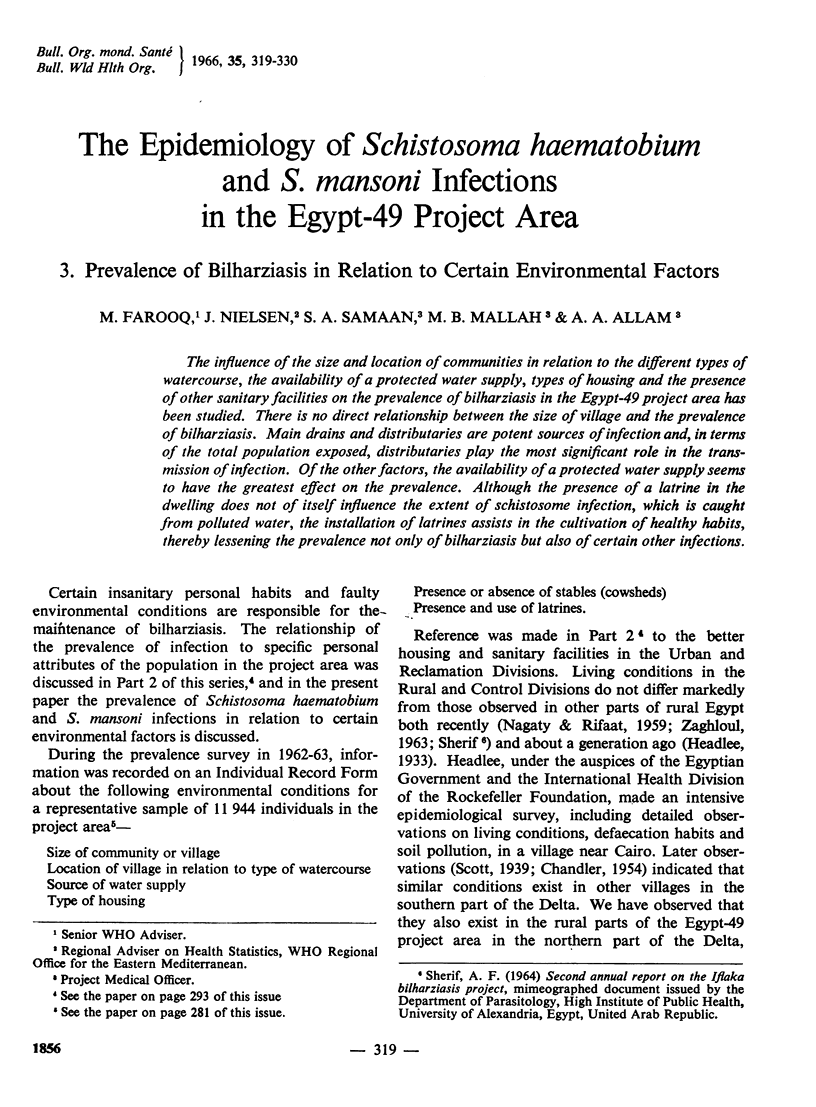

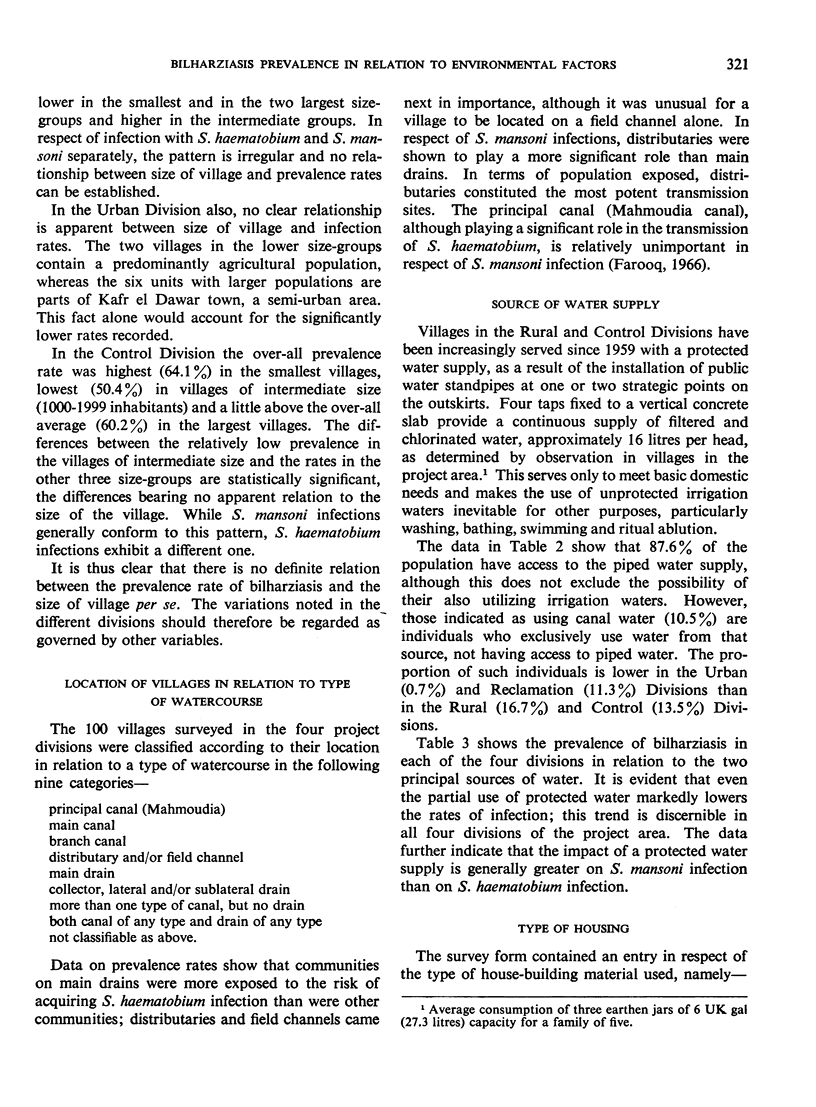
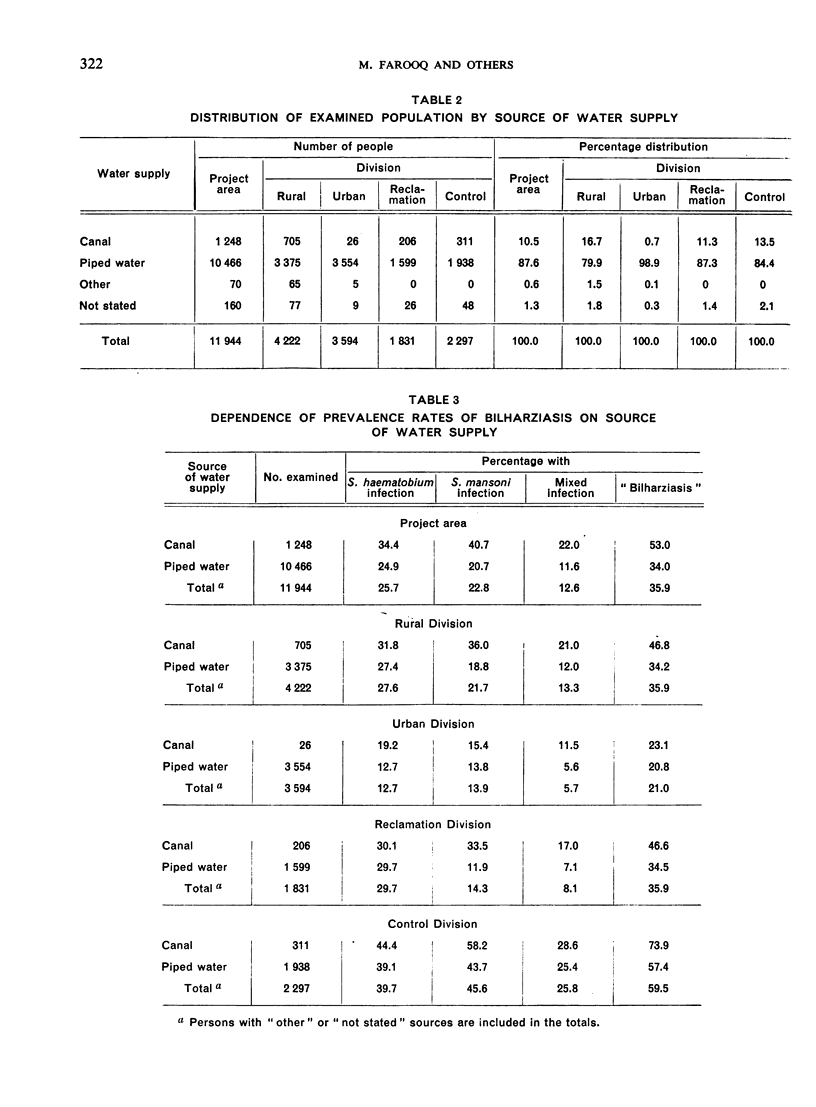
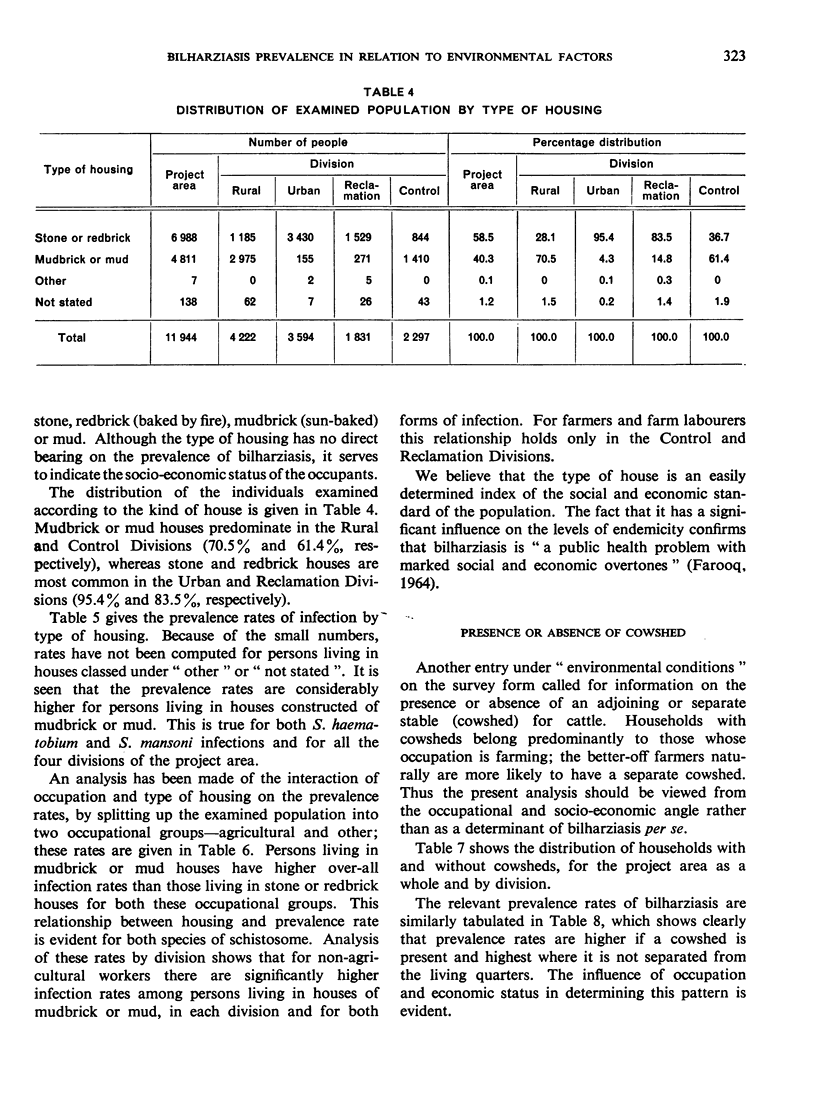
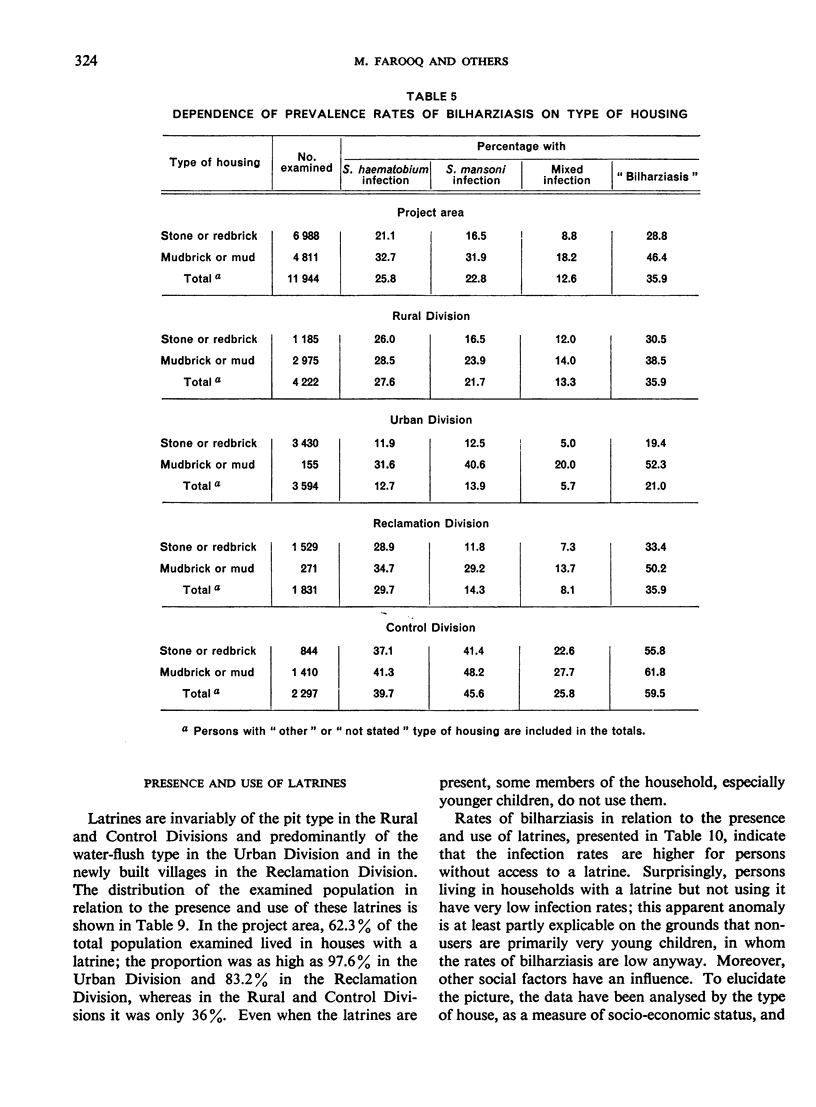
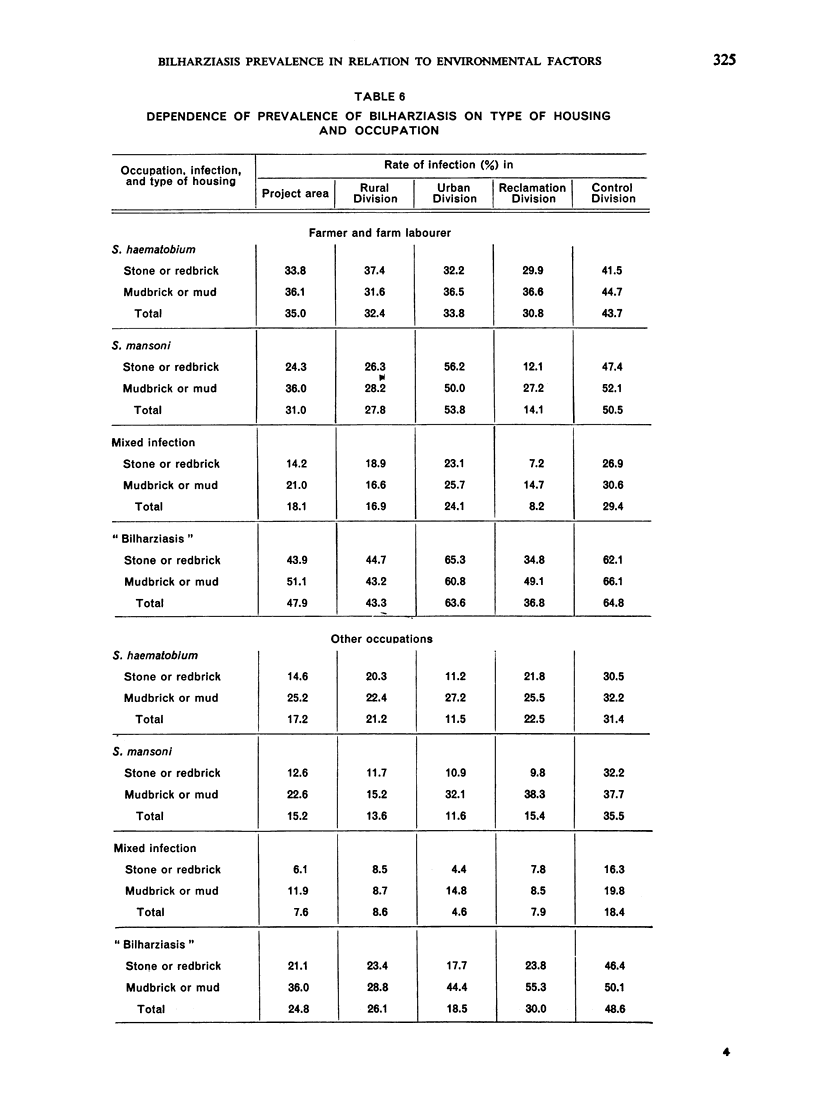

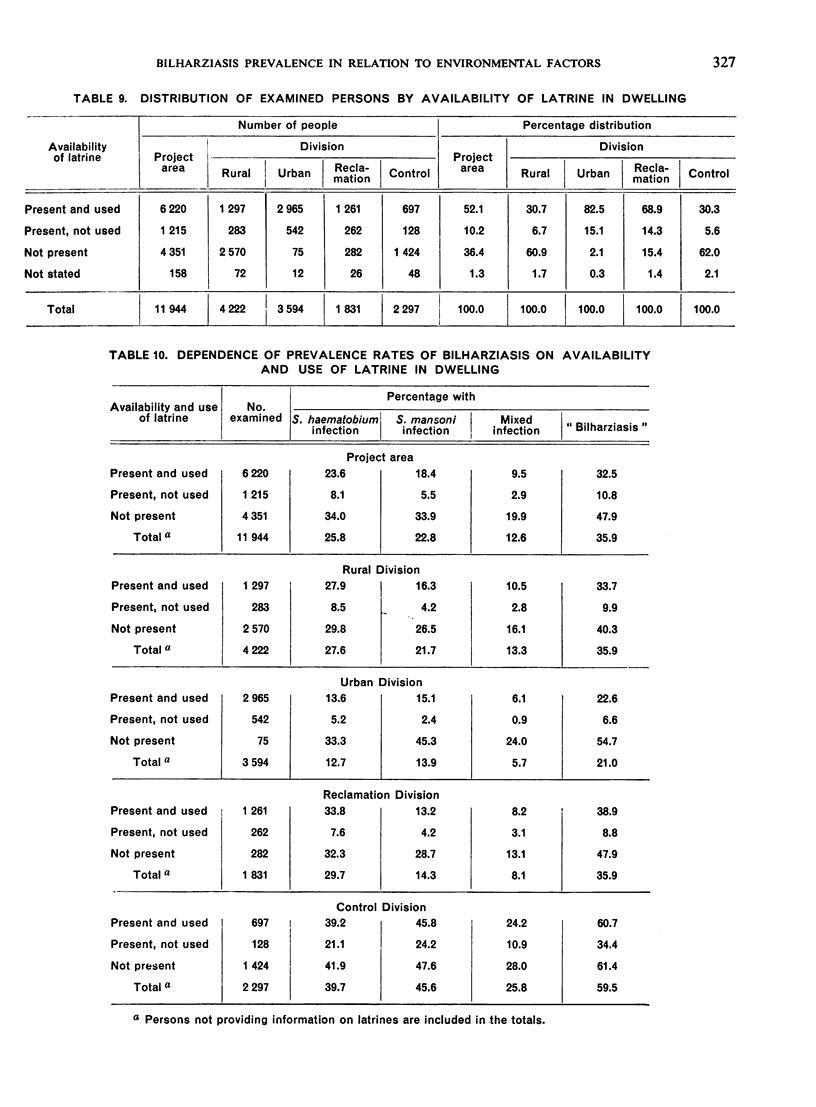
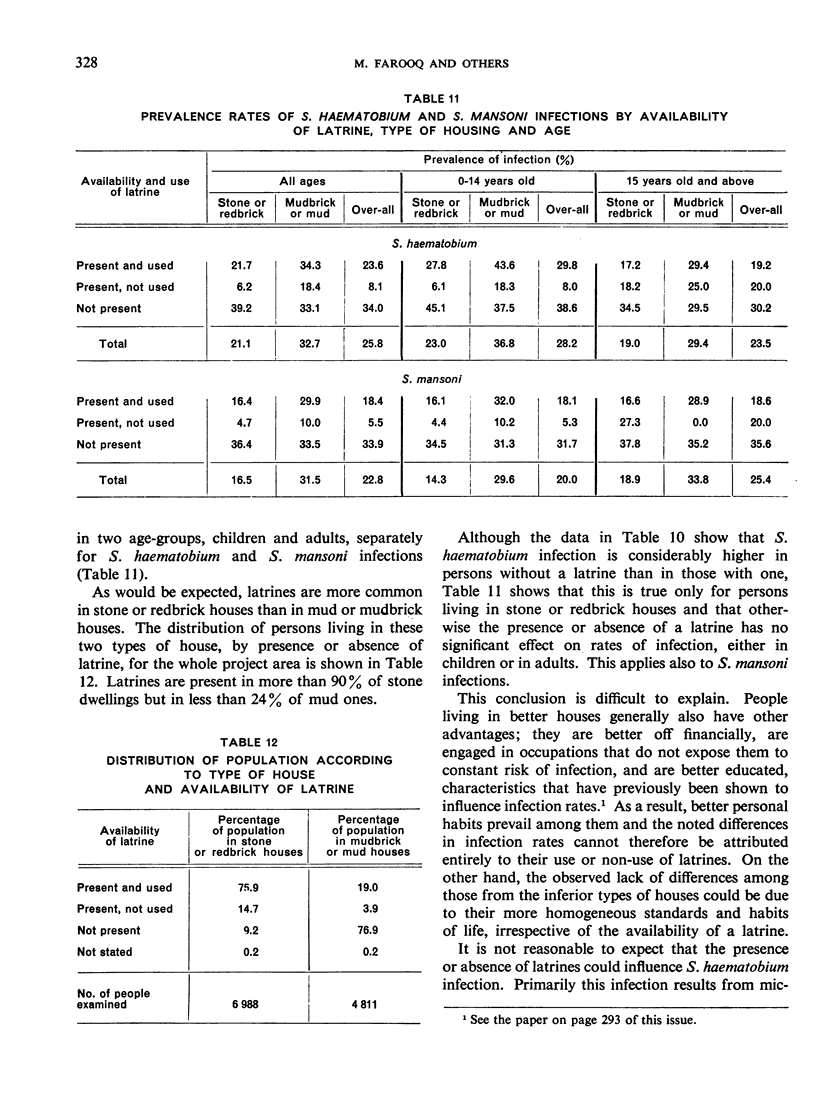
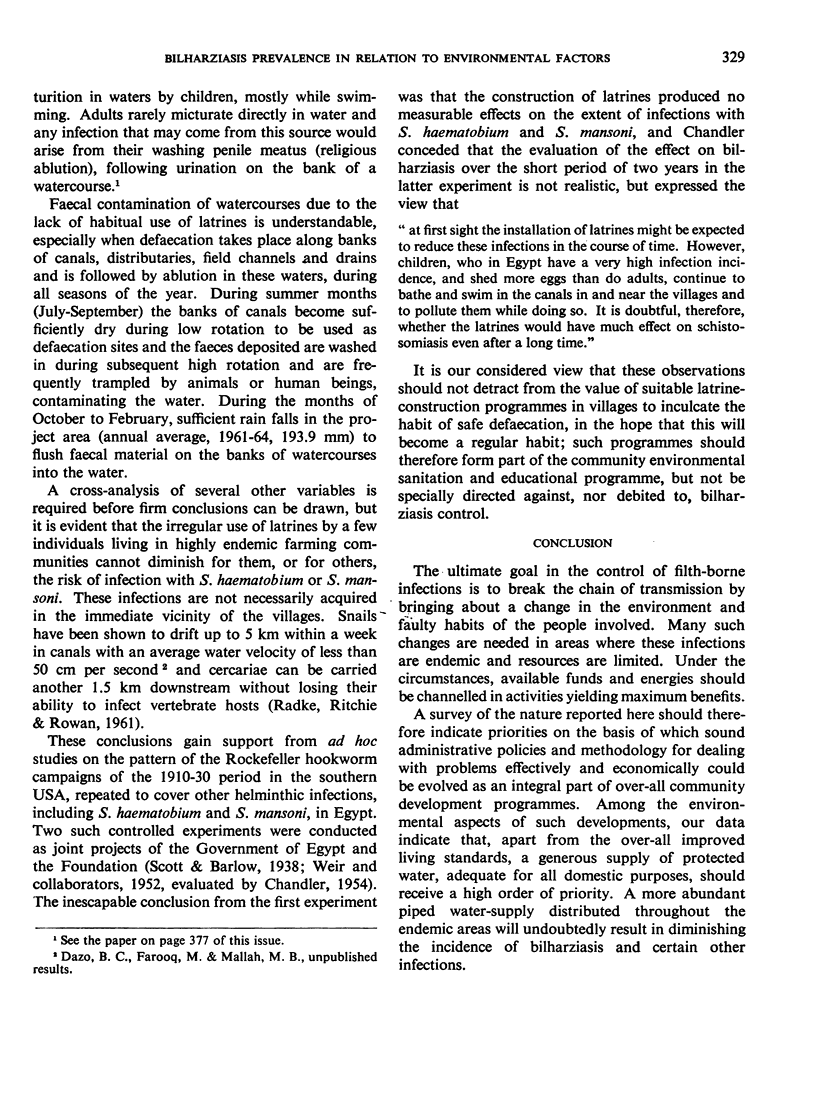
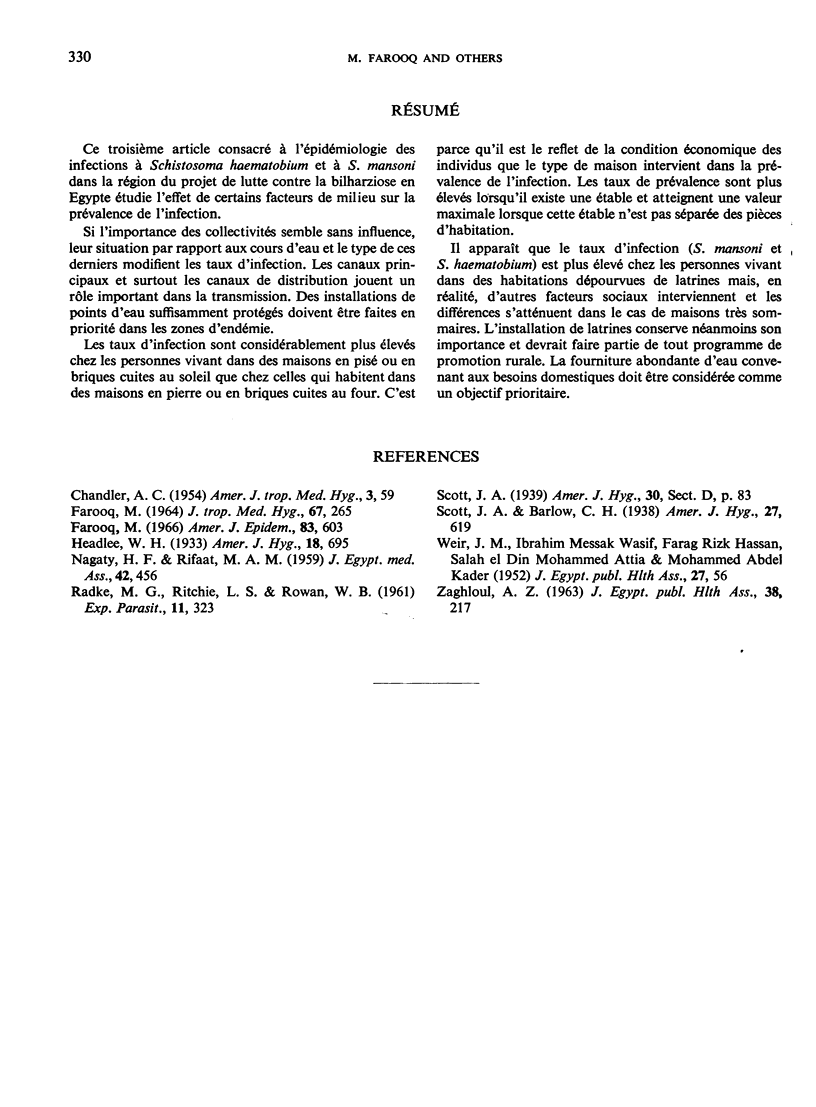
Selected References
These references are in PubMed. This may not be the complete list of references from this article.
- CHANDLER A. C. A comparison of helminthic and protozoan infections in two Egyptian villages two years after the installation of sanitary improvements in one of them. Am J Trop Med Hyg. 1954 Jan;3(1):59–73. doi: 10.4269/ajtmh.1954.3.59. [DOI] [PubMed] [Google Scholar]
- FAROOQ M. NEW PARTNERSHIPS IN SCHISTOSOMIASIS CONTROL. J Trop Med Hyg. 1964 Nov;67:265–270. [PubMed] [Google Scholar]
- Farooq M. Importance of determining transmisson sites in planning bilharziasis control. Field observations from the Egypt-49 project area. Am J Epidemiol. 1966 May;83(3):603–612. doi: 10.1093/oxfordjournals.aje.a120611. [DOI] [PubMed] [Google Scholar]
- NAGATY H. F., RIFAAT M. A. A helminthological survey of the inhabitants of the village of Barnasht, Giza Province, Egypt. U.A.R. J Egypt Med Assoc. 1959;42:456–465. [PubMed] [Google Scholar]
- RADKE M. G., RITCHIE L. S., ROWAN W. B. Effects of water velocities on worm burdens of animals exposed to Schistosoma mansoni cercariae released under laboratory and field conditions. Exp Parasitol. 1961 Nov;11:323–331. doi: 10.1016/0014-4894(61)90039-x. [DOI] [PubMed] [Google Scholar]


